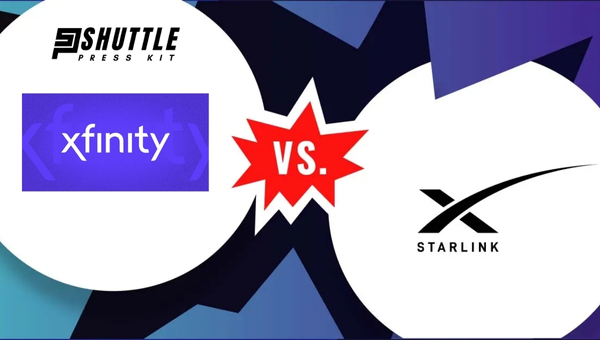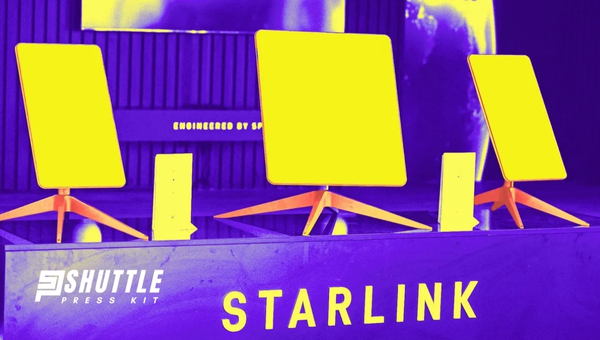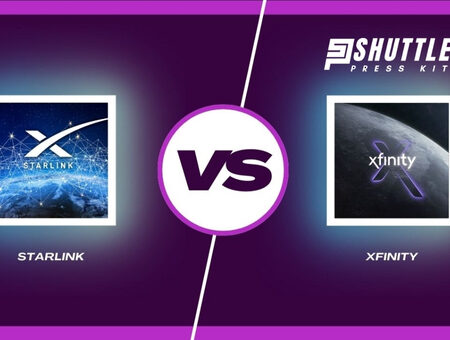Are you wondering which internet service is best for you? Today, I am comparing the big players in the market: Starlink vs. Xfinity. There are many choices now, but these two stand out among the rest.
You may have heard of Starlink with its promise to bring fast internet to remote areas through satellites. On the other hand, Xfinity is famous for its wide coverage and reliability in urban settings.
But which one should you choose? This decision can impact your daily life, work, and even entertainment at home. In this blog post, I will look at both services closely and help you decide which one matches your needs best. Don’t miss out on finding the perfect fit for your internet needs!
| Parameter | Starlink | Xfinity |
|---|---|---|
| Technology Type | Low Earth orbit satellite | Cable |
| Released Date | 2020 | 1996 |
| Availability | Global, especially in rural areas | Primarily North America; limited rural coverage |
| Speed | 50-250 Mbps (up to 1,200 Mbps in optimal conditions) | 50-2000 Mbps |
| Data Caps | No data caps; unlimited bandwidth | 1.2 TB data cap for non-business plans |
| Ping & Latency | Higher latency (40-50 ms) | Low latency (typically <1 ms) |
| Gaming | Not optimal for gaming due to higher latency | Ideal for gaming with low latency |
| Equipment Costs | $599 for Starlink kit (includes router and modem) | Varies; installation fee around $40; equipment costs may apply |
| Monthly Pricing | $90-$110 | $40-$200, depending on plan |
| Customer Service | Generally reliable but slower response | Mixed reviews; better billing support than technical support |
Starlink vs Xfinity: Differences Between Categories
When looking at internet service providers, Starlink and Xfinity stand out for their unique service models and customer offerings.

Starlink, leveraging its constellation of low-Earth orbit satellites, promises to deliver broadband internet to even the most remote areas globally.
On the other hand, Xfinity, primarily serving North America, offers a range of services from high-speed cable and fiber-optic internet connections to TV and phone services. Here’s a breakdown of key differences between these two providers:
- Availability:
- Starlink shines with its global coverage ambitions, aiming to provide internet access in rural and underserved locations worldwide through its satellite network.
- Xfinity’s footprint is significant but limited to North America; it thrives in urban and suburban regions where its infrastructure exists.
- Speed:
- The speed offerings between the two vary; while both promise competitive speeds within their service range, they cater to different market segments.
- Starlink offers residential packages with speeds ranging between 50-250 Mbps but can go up to 1,200 Mbps for higher tiers. Speeds can fluctuate based on several factors including network congestion.
- Xfinity boasts speeds from 50 Mbps up to an impressive 2 Gbps in some areas, branding itself as one of the fastest ISPs in the USA.
- Data Caps:
- One of the major advantages with Starlink is the absence of data caps for most residential plans which allows unlimited downloading or uploading without restrictions.
- Contrarily, Xfinity implements a data cap at 1.2 TB for most plans which might be limiting for heavy users or gamers without opting into business plans.
- Ping & Latency:
- Although satellite technology historically has higher latency issues due to signal travel distance times further than terrestrial solutions; however, Starlink’s low Earth orbit satellites provide relatively lower latency compared to traditional satellite services.
- With its cable and fiber infrastructure that ensures transmission over shorter distances than satellite signals need to cover before reaching Earth again; thus,/significantly reducing latency perfect for activities requiring quick response times like gaming or trading stocks online.
- Gaming Experience:
– Given Xfinity’s lower latency metrics and robust bandwidth options it theoretically provides a smoother gaming experience ideal for activities demanding immediate reaction times coupled with high-speed download/uploads essential modern multiplayer games.
– Conversely despite achieving commendable strides towards reducing satellite internet’s traditionally high ping rates toeing within reasonable limits under optimal conditions changes such as inclement weather could affect reliability and effectiveness during real-time online gaming sessions when using Starlink. - Equipment Needs & Costs:
– Initial setup costs and equipment-purchase requirements differ significantly between them; leading potential subscribers to weigh against upfront investments against the long-term usability efficiency each solution offers before deciding what best fits their needs preferences budget constraints etcetera.
Both services have distinct advantages depending on user requirements geographical location intended usage habits amongst other factors making choice highly personalized decisions reflecting individual circumstances rather than broad generalization
Customеr Sеrvicе Quality for Starlink and Xfinity
When it comes to customer service, Starlink is still relatively new but has been making strides in establishing a strong support system for its users.

The feedback points towards an evolving service desk that is committed to addressing the technical and account-related queries of its satellite internet customers promptly.
While some users mention delays in response times, possibly due to the burgeoning user base, the overall sentiment is that Starlink’s customer service is on a promising path to improvement.
Xfinity, operated by Comcast, carries with it a lengthy history and experience in customer service within the telecommunications sector. Xfinity’s customer support is widely reachable through various platforms including phone, online chat, and physical retail stores.
Despite some criticism regarding wait times and automation in their systems, many appreciate the comprehensive support structure which enables access to technical help and personalized account management effectively.
FAQs
What do you need to connect to the internet using either Starlink or Xfinity?
To connect with Starlink, you need a satellite dish and a Wi-Fi router, while with Xfinity, you typically require a cable modem and a compatible router.
If I’m an Xfinity customer, can I easily switch to Starlink?
Yes, switching is straightforward as long as Starlink services are available in your area; simply order the hardware and subscribe to one of their plans.
Can weather conditions affect the connectivity of Xfinity and Starlink?
Yes, severe weather conditions can impact both services: Xfinity may experience disruptions due to damaged cables, whereas Starlink’s satellite signals might be affected by heavy rain or storms.
What plans does Starlink offer in comparison to Xfinity?
Starlink offers a simple set of internet service options primarily differing by region, whereas Xfinity provides a variety of plans that may include internet-only packages or bundles with TV and phone services.
Who is the owner of Xfinity, and who owns Starlink?
Xfinity is owned by Comcast Corporation, one of the largest broadcasting and cable television companies globally; SpaceX owns Starlink.
Conclusion
Choosing between Starlink and Xfinity largely boils down to your specific needs, location, and preferences. For those in rural or remote areas, Starlink offers a beacon of hope with its broadband satellite technology ensuring connectivity where traditional cables can’t reach.
On the other hand, Xfinity provides robust service with varied plans and features predominantly in urban regions where it boasts extensive infrastructure. Speed, reliability, customer service experiences, and subscription costs also play critical roles in making an informed decision.
